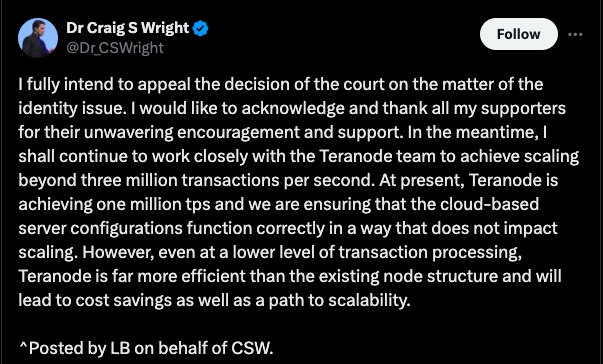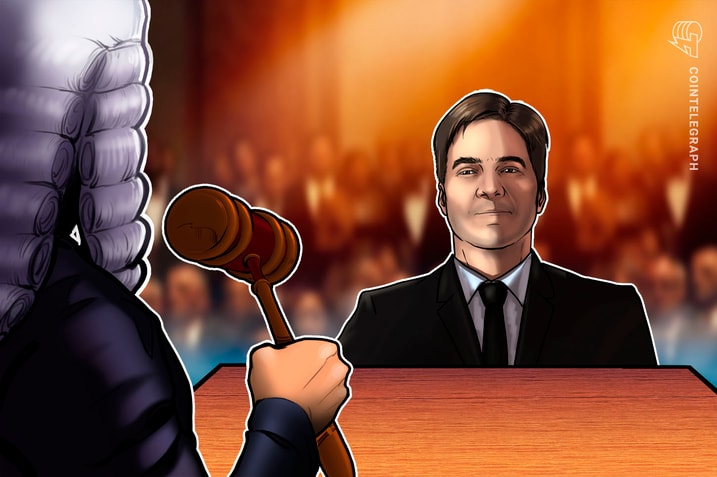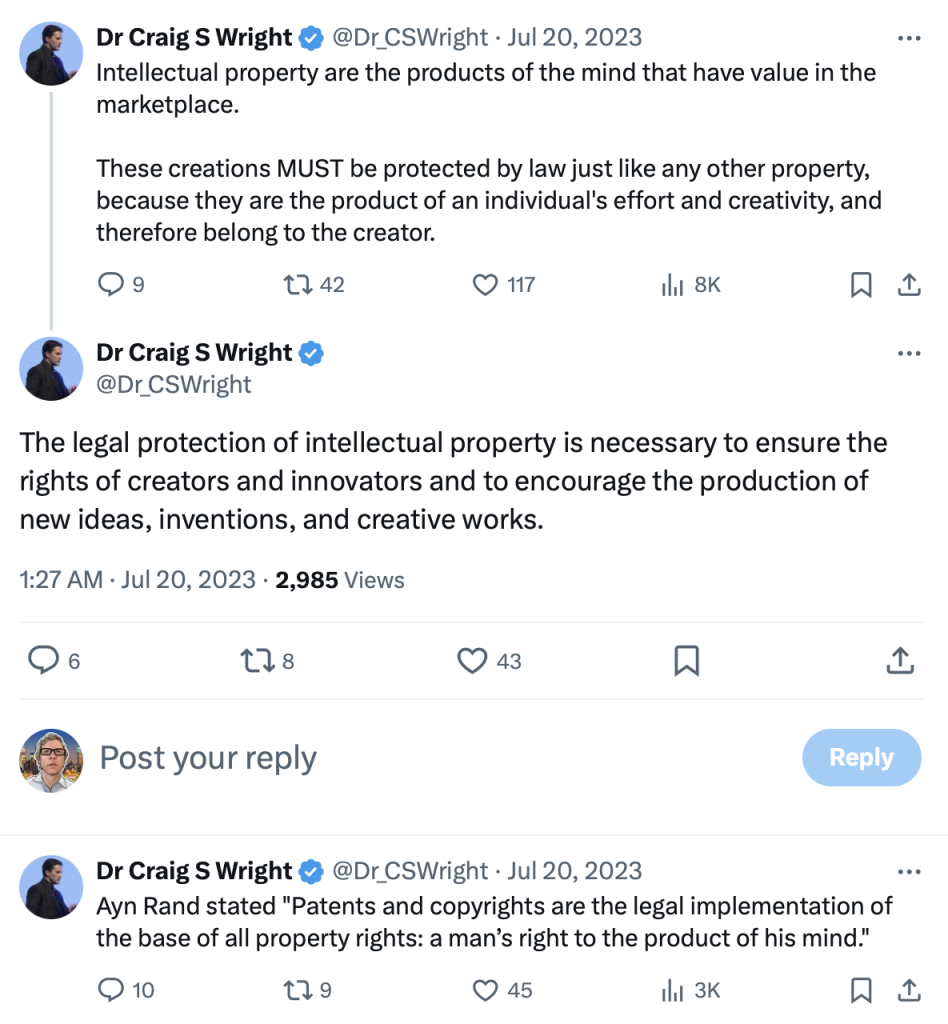Court ruling dismantles would-be Bitcoin creator Craig Wright’s false claims

Following a protracted legal battle, a U.K. court has methodically broken down Craig Wright’s mountain of fabricated evidence and assertions regarding his true identity.

After years of legal battles and sensational claims, Australian computer scientist Craig Wright’s claim of being Satoshi Nakamoto, the pseudonymous creator of Bitcoin, has been comprehensively dismantled by a ruling from Judge James Mellor in the High Court of Justice of the United Kingdom.
The detailed ruling came in relation to a case brought against Wright by the Crypto Open Patent Alliance (COPA), a coalition of prominent companies seeking to prevent Wright from asserting ownership over Bitcoin’s core intellectual property.
COPA alleged that Wright had engaged in an elaborate scheme of forgery and deceit to fabricate evidence backing his claim of being Nakamoto.
During the trial in February 2024, COPA’s legal team methodically dismantled Wright’s credibility, presenting a wealth of evidence and expert testimony exposing the fabrications and inconsistencies in his purported proof.
The alliance’s lawyers delivered a scathing indictment of Wright’s conduct, asserting that he had “lied on an extraordinary scale” and “invented an entire biographical history” to support his claims.
As the trial progressed, the court heard damning testimony from forensic experts and cryptocurrency analysts, who systematically deconstructed Wright’s evidence, revealing numerous instances of document forgery, manipulation and fabrication.
The analysis revealed glaring inconsistencies in metadata, formatting anomalies and technical inaccuracies that would have been uncharacteristic of the actual creator of Bitcoin (BTC).
In his ruling, Mellor left no room for ambiguity, stating unequivocally that Wright is not the author of the Bitcoin white paper, nor did he operate under the pseudonym Satoshi Nakamoto during the crucial period of 2008 to 2011. Lastly, in plain language, he asserted that Wright was “not the creator of the Bitcoin network.”
Despite the court’s seemingly black-and-white ruling, Wright expressed his eagerness to appeal the decision. In a statement, he acknowledged the backing of his supporters and their continued encouragement:

Wright, seemingly unbothered by Mellor’s remarks, also provided an update on his work with Teranode, a scalable implementation of the Bitcoin protocol. He claims it is on the verge of scaling beyond three million transactions per second while ensuring cloud-based server configurations function correctly for scalability.
Judge says Wright forged documents
Mellor’s 231-page judgment exhaustively analyzed the evidence presented during the trial, with a significant portion of the judgment focused on allegations of forgery.
The court analyzed numerous documents — including emails, blog posts and technical papers — that Wright had presented as evidence supporting his claim.
Recent: Freedom of speech isn’t a ‘trump card’ for Tornado Cash developers
For instance, the Tyche emails, purportedly exchanged between Wright and others discussing early Bitcoin-related activities, were found to have inconsistencies in metadata, such as timestamps and email headers, indicating they were created much later than claimed.
Similarly, the credit card statements presented by Wright to demonstrate his financial transactions related to Bitcoin contained altered dates and transactions that did not match National Australia Bank — one of Australia’s four largest banking institutions — records, suggesting they were tampered with to create a false narrative.
Additionally, the nCrypt emails supposedly exchanged between Wright and his associates discussing critical aspects of the Bitcoin network were found to have formatting anomalies and inconsistencies, indicating fabrication. Mellor noted:
“The forensic analysis showed these emails were fabricated, and their content lacked the technical accuracy expected from Satoshi Nakamoto.”
Additionally, Mellor highlighted significant errors in Wright’s understanding and application of Bitcoin’s cryptographic hash principles and his inability to produce verifiable private keys for the early Bitcoin blocks mined by Satoshi himself.
Access to these keys could have been a straightforward and definitive way to prove his identity, yet Wright could not do this. Mellor noted:
“Dr. Wright’s understanding and application of Bitcoin’s cryptographic principles were fundamentally flawed. Significant errors were evident in his technical explanations, which Satoshi Nakamoto would not have made. This lack of accurate technical knowledge severely undermines his claim.”
Forgery, conspiracy theories and lack of credibility
The court scrutinized Wright’s demeanor and responses to cross-examinations throughout the trial. Documents note that he frequently evaded direct questions and provided convoluted, jargon-filled explanations — termed “technobabble” by the court.
The court noted that an individual with genuine expertise and involvement in Bitcoin’s creation would not need to resort to such tactics. Moreover, the judge remarked that Wright’s responses during cross-examination were marked by inconsistencies and falsehoods.
When confronted with the discrepancies in his evidence, he often shifted blame to unidentified third parties or provided new, unsubstantiated explanations, the court stated.
“There is a long list of those whom Dr. Wright blamed for his disclosed documents bearing signs of forgery. In several instances, he came up with conspiracy theories involving forgery by disgruntled former employees […] Ira Kleiman and Uyen Nguyen […] These theories were uniformly unsupported by any evidence,” Mellor highlighted.
While Wright was given opportunities to respond, the submitted evidence often contained even more inconsistencies and fabrications, which were systematically exposed by COPA’s legal team and expert witnesses.
Legal and precedential implications
The judgment in COPA vs. Wright has significant legal and precedential implications for intellectual property rights and global crypto laws. For starters, it reinforces the importance of establishing credibility, authenticity and rigorous evidence examination in legal proceedings related to digital assets.
Recent: Ether security debate continues as SEC ETF decision deadline looms
Moreover, Mellor’s ruling reinforces Bitcoin’s decentralized nature, allowing the community to focus solely on the development and adoption of digital currency without the looming threat of unfounded ownership claims. Following the verdict, a COPA spokesperson released a statement:
“Developers can now continue their important work maintaining, iterating on, and improving the Bitcoin network without risking their personal livelihoods or fearing costly and time-consuming litigation from Craig Wright.”
Thus, moving forward, the focus within the Bitcoin community is likely to shift toward exploring new use cases and fostering greater mainstream acceptance of Bitcoin rather than dealing with legal entanglements such as these.






Responses